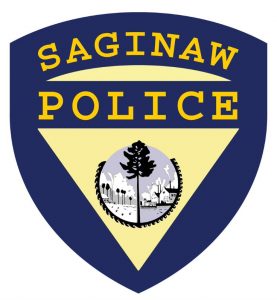In 2016, the Casper, Wyoming; Chattanooga, Tennessee; and Saginaw, Michigan, Police Departments were selected as demonstration sites for the Enhancing Law Enforcement Response to Victims (ELERV) initiative. The three-year initiative was designed to assess and expand police response to victims of crime while increasing agency capacity to meet the diverse needs of this population. The ELERV strategy publication series provided the framework, concrete steps, and resources necessary for assessing needs, evaluating existing victim response efforts, prioritizing goals, and implementing and evaluating new victim-centered, trauma-informed strategies. As notable individual and structural differences existed among the demonstration sites and communities, including agency staffing and resources, community demographics and culture, and historical community-police relationships, each site adapted the ELERV strategy to fit its distinct needs. The demonstration site teams focused their assessment and implementation activities on the four core principles central to enhanced victim response: leadership, partnering, training, and performance monitoring.
|
A foundational component of the ELERV initiative was to form research partnerships between participating agencies and research teams to enable independent, unbiased external assessment and analysis of data. Research teams included faculty from St. Cloud State University (partnering with Casper Police Department), University of Tennessee-Chattanooga and Southern Adventist University (partnering with Chattanooga Police Department), and Saginaw Valley State University (partnering with Saginaw Police Department). Overall, the quantitative (e.g., surveys, post-training questionnaires) and qualitative (e.g., focus groups, interviews) data collected from the three sites revealed several positive findings, including the provision of more comprehensive training for sworn and professional personnel on response to victims of crime, changes in agency policies and procedures associated with responses to victims of crime, improved perceptions of the value of enhanced victim response efforts, increased openness of agencies to engage with community partners in new ways, and increases in the number of formalized partnerships between law enforcement and advocacy agencies dedicated to serving victims. Ongoing opportunities to assess and evaluate response strategies were also identified, allowing each site to focus continuing efforts on eliminating gaps in services to victims. Examples of how the demonstration site teams used data to inform implementation and address the four core principles of ELERV follow.
Leadership
 The ELERV strategy identifies effective law enforcement leaders as those who consistently convey the benefits of enhanced victim response to all staff, develop and sustain agency infrastructure that make enhanced victim response a priority, and foster ongoing communication and partnerships with community stakeholders.
The ELERV strategy identifies effective law enforcement leaders as those who consistently convey the benefits of enhanced victim response to all staff, develop and sustain agency infrastructure that make enhanced victim response a priority, and foster ongoing communication and partnerships with community stakeholders.
Research Partner Activities
Agency leadership at each of the demonstration sites identified ways to incorporate data collected by their research partners to ensure the infrastructure for effective victim response was in place throughout the agency. To guide their work in the first year of ELERV implementation, Chattanooga Police Department (Chattanooga PD) and its research partners facilitated focus groups with community members who identified as victims of a crime. Internal agency surveys were also utilized to capture Chattanooga PD sworn personnel’s perceptions of victims of crime, amount of victim interaction, and officer training completed. Drawing from the focus group and survey results, Chattanooga PD’s leadership took steps to better support all personnel in their efforts to effectively respond to victims and to support victim-centered practices. For example, agency leadership identified the need for a stand-alone Victim Services Unit (VSU) in the agency. Once established, the office of the director of this unit was intentionally placed in the Administrative Hall to show that the VSU is of equal value as other branches of the agency. Other strategic leadership decisions included placement of VSU advocates throughout the Violent Crimes Bureau (VCB), to make victim services readily available and to ensure the work of VSU personnel was seen as valuable in the policing and investigative processes. The VSU director was also included in executive staff meetings, and all VSU staff were invited to attend command staff meetings on a regular basis. In 2018, a new Victim Service Award was instituted by the chief as part of the Chattanooga PD’s annual award ceremony. The award is presented to one patrol officer and one investigator who exemplify the values of victim-centered policing and the agency. To further communicate the high value leadership places on effective victim response, Chattanooga PD incorporated the assessment of these values and skills into promotional processes. Specifically, during the assessment phase of the promotion process from officer to sergeant and from sergeant to lieutenant, those under consideration must demonstrate a thorough knowledge of the elements of victim-centered, trauma-informed policing and how to access victim support services in the community.
Similarly, Casper Police Department (Casper PD) addressed the leadership component of the ELERV initiative by employing a new strategy of actively involving community stakeholders in assessments of officers’ ability to respond to victims of crime. This decision was largely based on the Casper PD research partner’s findings showing that some community members and victims of crime perceived that there was a need for increased community connectivity and collaboration with the police department and that officers should receive additional education and training to develop skills to help them better assist and follow up with crime victims. In response to these findings, the Casper PD now requires that candidates for promotion to the rank of sergeant appear before a panel of community members where they are evaluated on their response to a scenario involving a victim of crime, concerned community member, or another similar interaction. The scores and comments on these evaluations are considered when selecting personnel for these leadership positions.
Partnering
 The ELERV strategy emphasizes that victims are best served when law enforcement agencies have strong internal partnerships across ranks and disciplines and work closely with external community organizations. Partnerships allow agencies to maximize their capacity to serve victims by establishing coordinated internal response practices and referring victims to community organizations that offer long-term support and services.
The ELERV strategy emphasizes that victims are best served when law enforcement agencies have strong internal partnerships across ranks and disciplines and work closely with external community organizations. Partnerships allow agencies to maximize their capacity to serve victims by establishing coordinated internal response practices and referring victims to community organizations that offer long-term support and services.
Research Partner Activities
Recognizing that law enforcement cannot address all of the often-complex needs of victims, the demonstration site teams identified partnering opportunities that could be leveraged in support of victim and community well-being. Command staff from Chattanooga PD devised and implemented plans to encourage more robust partnerships between Chattanooga PD and community entities based on findings from focus groups with community members and victims of crime. Findings showed that officers were sometimes perceived to have limited knowledge about victim services, or if they were knowledgeable, officers were not consistently relaying information to victims about resources in the community. As a result, Chattanooga PD’s leadership at all levels and VSU staff made intentional partnerships with community leaders and agencies serving victims to ensure agency personnel understood the resources available in the community and ways they could assist victims in accessing these resources. Chattanooga PD now consistently partners with over 20 community agencies, including agencies that serve victims of intimate partner violence and child abuse; Hispanic and immigrant communities; and children, families and adults living with mental illness.
Additionally, Chattanooga PD proactively seeks and forms new community partners to aid in the provision of comprehensive, ethical, and evidence-based services that will better serve victims of crime. One example of an innovative partnership developed during the ELERV initiative was the partnership between Chattanooga PD and the Chattanooga Public Library. The focus groups with cadets showed an overwhelming majority of participants valued peer education and mentoring from officers over formal education. When contacted by Chattanooga PD staff to establish what is now known as The Blue List, the library staff were eager to establish the partnership. The Blue List is composed of books that have been recommended by officers and agency leaders. Chattanooga PD advertises books selected for The Blue List on scrolling TV screens in the agency with a quote from the referring personnel and features the books on a display shelf in the squad room. While some officers choose to read the books on their own, there have been instances where entire patrol teams or a chain of command collectively read a title from the list and then held discussions.
Like Chattanooga, Casper PD’s research partners conducted focus groups with victims of crime from marginalized populations and personnel from community victim services providers. Information gathered identified the need for a more supportive environment for victim interviews. In response, Casper PD’s soft interview room was developed in partnership with a local furniture store, using private donations to fund these efforts. The soft interview room was developed within police headquarters to provide a comfortable, safe space for agency personnel to speak with victims. Prior to this change, victims were interviewed in a room with stark white walls and uncomfortable metal furniture—the same room where suspect interrogations were held. The new soft interview room was designed using a trauma-informed lens to make victims feel safe. It includes soft colors, comfortable seating, throw pillows, wall art, and available drinks and snacks, all supporting a sense of safety within the agency for discussing victimization and completing investigative interviews. The new room was announced to community partners and opened during the city’s recognition of Domestic Violence Awareness Month, a time when public awareness and education are shared throughout the community.
Training
 The ELERV strategy recommends the provision of ongoing training for all law enforcement agency personnel across ranks and disciplines that focuses on victim response knowledge and skills. Multi-disciplinary cross-training that ensures multiple points of view and expertise are included in instruction is also strongly encouraged. Research and best practices for serving victims are constantly evolving, so it is critical that training reflects the most recent information.
The ELERV strategy recommends the provision of ongoing training for all law enforcement agency personnel across ranks and disciplines that focuses on victim response knowledge and skills. Multi-disciplinary cross-training that ensures multiple points of view and expertise are included in instruction is also strongly encouraged. Research and best practices for serving victims are constantly evolving, so it is critical that training reflects the most recent information.
Research Partner Activities
At the onset of ELERV, the training component for each demonstration site included broadening the range of courses and training provided to agency personnel, with the hope of enhancing both professional and personal development. After completing an inventory of current training plans, Saginaw Police Department (Saginaw PD) instituted a wide-ranging set of new training initiatives including roll call trainings provided by community partner agencies on various topics(e.g., working with youth, trauma-informed approach to adult sexual assault victim interviews, mental health, overviews of community partner agency services, recognizing stress, and developing coping skills), in-service training (e.g., cultural diversity and inclusion, trauma-informed interviewing, and report writing), and regional and national training opportunities for members of the new Saginaw PD Victim Services Unit. Additionally, following participation at national conferences, peer-developed and led training opportunities were incorporated within the agency; for example, an agency-wide sexual assault and strangulation response workshop was developed and facilitated by personnel who attended a national conference focused on these topics. Members of the agency were asked for feedback on the trainings, and most agency members reported that they found the training information relevant and useful .
Saginaw PD also identified a new topic to include in their training efforts. Members of the Saginaw PD Victim Services Unit participated in a vicarious trauma workshop while attending a national conference and found the information to be relevant to their work. Recognizing the importance of understanding vicarious trauma and how it impacts professional and personal wellness, Saginaw PD partnered with IACP to host a vicarious trauma seminar for the entire agency. Community partners were also invited to attend. Based on the training received at the national conference, this topic was selected because research has shown that the exposure to the trauma of others (e.g., victims) by first responders such as law enforcement personnel has been shown to change the worldview of these individuals and can put them and their organizations at risk for a range of negative consequences.1 The training also showed how personal trauma can build up and result in officer burnout. By training personnel on how to recognize and address vicarious trauma in themselves, Saginaw PD provided officers with new tools to support increased empathy and engagement with victims. A follow-up survey showed the officers felt the information was relevant and will use the information. In addition, further analysis of the impact of vicarious trauma was completed using the Vicarious Trauma Toolkit.2 As a result of the feedback from officers and the data collected from the analysis, vicarious trauma is now included in agency-wide in-service training plans.
The Chattanooga PD team also implemented new training initiatives aimed at enhancing victim response at all levels in the agency. For example, cadet academy training curriculum were updated to include topics such as race and poverty and the impact both have on policing strategies. These topics were identified by cadets during focus groups as areas where additional training could be beneficial. A Poverty Simulation was instituted and is now included as a regular staple of the 22-week training process for cadets. Taking place around week six of the academy, cadets are assigned a budget and a set of life circumstances; they must “make ends meet” throughout the simulation. This interactive process allows cadets to learn about barriers community members living in poverty face and ways this may impact their ability to fully participate in the criminal justice process. It also enables the cadets to refer to the lessons gleaned from the exercise throughout the duration of their academy experience.3
In addition to improving training strategies by including victim-related topics in training plans, Chattanooga PD also expanded their training faculty by incorporating the Victim Services director as a trainer or co-trainer for the cadet academy, annual in-service training for all ranks of all officers, the Supervisor School for new sergeants, roll call trainings, and Predictive – Community and Intelligence Policing (Pre-CIP) and command staff meetings. By having a professional staff member in a leadership position of the VSU serve as a trainer in these settings, the agency ensures that each department—at every level—is familiar with victim-centered goals, interventions, and strategies.
Performance Monitoring
 The ELERV strategy recommends agencies strategically capture data and monitor both internal and external performance measures. This can help build a roadmap for implementation, identify gaps along the way, and provide opportunities for improvements to best meet the needs of those served. Research partners can help expand an agency’s capacity to examine the existing agency culture, policies, and practices and obtain feedback from key stakeholders. These partnerships allow agencies to benefit from researchers’ expertise and support objectivity in data collection.
The ELERV strategy recommends agencies strategically capture data and monitor both internal and external performance measures. This can help build a roadmap for implementation, identify gaps along the way, and provide opportunities for improvements to best meet the needs of those served. Research partners can help expand an agency’s capacity to examine the existing agency culture, policies, and practices and obtain feedback from key stakeholders. These partnerships allow agencies to benefit from researchers’ expertise and support objectivity in data collection.
Research Partner Activities
Each demonstration site and researcher team approached performance monitoring in various ways throughout implementation of the ELERV strategy. Shortly after the initiative began, both the Saginaw PD and Casper PD teams engaged in external performance monitoring by inviting groups of agency leaders, community leaders, and stakeholders currently serving victims of crime to participate in SWOT (strengths, weaknesses, opportunities, and threats) exercises. The goal of the exercises was to gather feedback to inform planning and identification and prioritization of project goals. In Saginaw, the group included representatives from nonprofit agencies providing direct services to victims, health and human services agencies, the clergy, underrepresented groups in the community (e.g., members of minority groups, the LGBTQ+ community, and community members who are experiencing homelessness), the school system, the courts, and local political leaders. Several members of Saginaw PD also participated in the SWOT exercise. In Casper, it was determined that two separate SWOT exercises would be most productive, so one was held with agency leadership and another with community partners. For both teams, several themes emerged from the exercises including the need for better communication between police and victim services agencies, the need for more training for agency personnel who interact with victims, and the need to increase understanding of the services and information available from each participating group and service provider agency.
Recommendations from the SWOT analysis led Saginaw PD to invest in a victim services specialist position to be based in the agency. Using the data collected as a needs assessment, one of the nonprofit agencies in the community wrote a grant to support the position and now contracts services with the Saginaw PD. The victim services specialist now works with Saginaw PD officers, investigators, command staff, interns, and volunteers to provide services to individuals affected by crime and crisis circumstances in order to reduce the impact of trauma and enhance the individuals’ abilities to rebuild their lives. The victim services specialist also serves as a liaison between the Saginaw PD and a broad network of community partner agencies.
Casper PD had an established Victim Services Unit at the outset of ELERV strategy implementation, and the SWOT analysis served as a catalyst for renewed partnerships and identification of goals for the initiative. Data and information collected from both exercises also led to the targeted selection of focus group participants and helped the research partners construct questions for internal agency and community member surveys.
For the Chattanooga PD team, internal performance monitoring led to identification of gaps in training and opportunities to revise field training efforts. Cadet focus groups showed that cadets were overall supportive of the agency’s commitment to victim-centered, trauma-informed practices; believed part of their role as a law enforcement officer was to serve as a resource for crime victims; and perceived soft-skills training to provide empathetic and effective victim response as on par with other skills training in the academy. The research team then conducted follow-up focus groups within six months of the cadets’ graduation from the academy and start of patrol work. Feedback during these follow-up focus groups showed a marked change from the baseline focus groups. Responses indicated that cadets now believed soft-skills training had limited value and that some victims bring their victimization on themselves. While these results were surprising and somewhat discouraging to the agency, opportunities to offer additional support and mentoring to cadets after they graduate from the academy were identified. In addition, since post-academy training is field training, the agency responded by taking a closer look at its field training curriculum and how field training officers are identified and trained to fill these leadership roles, as well as how they are supported once placed.
Lessons Learned
Demonstration site and researcher teams identified key lessons learned in each of the four core principle areas of the ELERV strategy. These lessons and insights may be helpful to other agencies interested in exploring or adopting the ELERV strategy. They include
- Leadership – Agency leaders are encouraged to focus enhanced victim response efforts throughout the agency. This includes all personnel across ranks and disciplines and requires leaders to demonstrate spoken values through implementation of policies and accountability measures. Establishing clear messages and taking accompanying actions leads to infrastructure changes and supports sustainability of efforts.
- Partnering – Partnerships, both internal and external, can support effective information sharing and leveraging of community resources to collectively work to meet the needs of victims of crime. This type of collaboration between police agencies and professionals who routinely work with victims or marginalized populations can be especially important in agencies where human resources and budgets are stretched thin. Strong partnerships can serve as force multipliers in efforts to meet the needs of victims.
- Training – Training provides agency personnel opportunities to enhance skill sets and become familiar with the breadth of existing community resources and points of view and avenues for educating and sharing resources with victims and community members. Agencies are encouraged to implement victim response training for all personnel. This demonstrates the value the agency places on providing high-quality services to victims of crime, encourages agency-wide culture change, and supports incorporation of victim-centered practices.
- Performance Monitoring – Including both internal and external data to inform decisions can be extremely helpful in monitoring the progress of enhanced victim response efforts. Quantitative and qualitative research can help agencies identify where and why problems exist as well as opportunities for positive change. Agencies are also encouraged to make data collection and research a routine part of decision-making. Partnering with external research partners (such as researchers from universities) to assess agency needs or evaluate existing programs can assist agencies with decisions related to the best use of limited resources and the assessment of the effectiveness of strategies in, as well as how processes may be improved to best meet the needs of victims and communities served.
Overall, the demonstration site teams benefited from the incorporation of data and research into victim response efforts at their agencies. The ELERV research partners brought skill sets that were not readily available within the agencies and assisted in identifying existing agency data, gathering internal and external baseline data, asking questions about agency and community culture that were difficult to assess internally, and bringing an outside critical eye to decision-making. They offered unbiased evaluations and recommendations and created opportunities for internal and external stakeholders to express their views, both positive and negative. They assisted the demonstration site teams by designing surveys and questionnaires, facilitating SWOT and focus group exercises, analyzing data collected, obtaining approval for research using human subjects, and assisting the agencies in incorporating data information into decision-making processes.
Agencies are strongly encouraged to consider developing partnerships with external researchers. Because the research process requires specialized skills, it is recommended that agencies partner with faculty or graduate students from local community colleges, colleges, and universities to establish mutually beneficial research partnerships. Regional institutions of higher education frequently define themselves as a “community resource” in their mission statements. Faculty members and students in advanced degree programs from related disciplines, criminal justice, sociology, political science, social work, and psychology, possess the skill sets needed to assist with agency evaluation efforts. They may be available and will likely be eager to discuss and establish research partnerships. Agencies not located near an institution of higher education may wish to consult with the IACP or access the Center for Victim Research – Victim Researcher Directory for assistance identifying partnership opportunities.
All three ELERV demonstration site teams experienced significant benefits from working with research partners and taking a joint approach to identifying needs, setting goals, and monitoring progress. This highly collaborative and customizable method is ideal for law enforcement agencies working to enhance their response to crime victims. There is no single “right way” to incorporate data into agency practice, and agencies can easily start small and build on their efforts over time. Involving a research partner can add value to the agency by combining the scientific knowledge and analytic skills of researchers with the extensive knowledge and expertise of agency personnel to take a holistic look at problems and identify evidence-based solutions.
| This project was supported by Grant No. 2018-V3-GX-K066, awarded by the Office for Victims of Crime, Office of Justice Programs, U.S. Department of Justice. The opinions, findings, and conclusions or recommendations expressed in this document are those of the authors and do not necessarily represent the official position of the U.S. Department of Justice. |
Notes:
1 Office for Victims of Crime, “What Is Vicarious Trauma?” The Vicarious Trauma Toolkit.
2 Office for Victims of Crime, “What Is the VT-ORG?” The Vicarious Trauma Toolkit
3 For additional information about the Community Action Poverty Simulation, please visit www.povertysimulation.net.
Please cite as
Joni Boye-Beaman et al., “Implementing the ELERV Strategy: Police and Researchers Partner to Improve Response to Crime Victims,” Police Chief Online, December 23, 2020.






